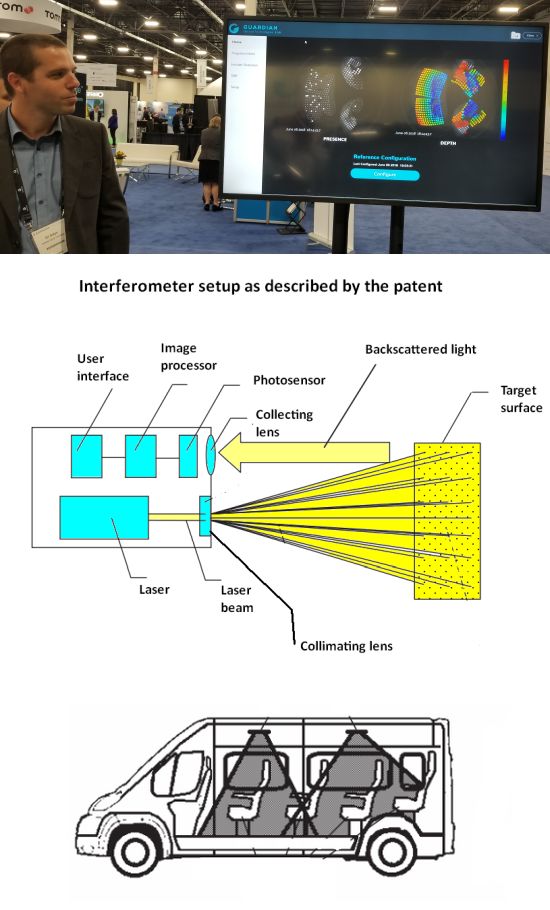Who’s sitting in the back seat? This sensor knows
 Guardian Optical Technologies showed a prototype of its patent-pending sensor technology that is so new we weren’t allowed to take a picture of it. Sitting in a tissue-box-sized enclosure mounting amidships to the roof of the passenger compartment, the sensor performs 2D, 3D and motion analysis using speckle imaging. This technique employs a large number of short exposures to construct images. The resulting information looks like what appears in the top display, here flanked by Guardian CEO Gil Dotan.
Guardian Optical Technologies showed a prototype of its patent-pending sensor technology that is so new we weren’t allowed to take a picture of it. Sitting in a tissue-box-sized enclosure mounting amidships to the roof of the passenger compartment, the sensor performs 2D, 3D and motion analysis using speckle imaging. This technique employs a large number of short exposures to construct images. The resulting information looks like what appears in the top display, here flanked by Guardian CEO Gil Dotan.
Guardian’s technology can differentiate a child from an adult sitting in a seat, or a pet from a human. It can also tell whether an occupant is wearing a seat belt. Among the applications Guardian foresees is to warn of an infant forgotten in the back seat, the presence of an intruder, and basic driver monitoring for safety purposes.
In realizing its sensing technique, Guardian had to devise an inexpensive interferometer to sense vibrations. The interferometer is described in one of the company’s patents. The patent describes a device that includes a coherent light source for projecting a multi-beam pattern onto surfaces, an imaging device for mapping a speckle field generated by each spot formed on the surface by the multi-beam pattern to a unique region of an imaging sensor, and a processor that analyzes light intensity at each region of the imaging sensor to detect speckle dynamics. A proprietary algorithm derives surface vibration information from changes/shifts in light intensity on the imaging sensor. The algorithm follows the intensity of each spot over time and analyzes its variance. The patent explains that it is necessary to differentiate between the variance of the signal originating from the statistical noise of the sensor and the variance originating from a shift in the speckle pattern, indicating a surface motion. The variance threshold indicating motion gets adjusted in real time. To prevent false detections, the sensor applies several filters to the motion data. This scheme is said to derive surface vibration information from speckle vibrations at amplitudes ranging from 1 μm to 50 cm and at frequencies between 1 Hz and 100 kHz.
NEXT PAGE: Stopping spoofed sensor readings







Leave a Reply
You must be logged in to post a comment.